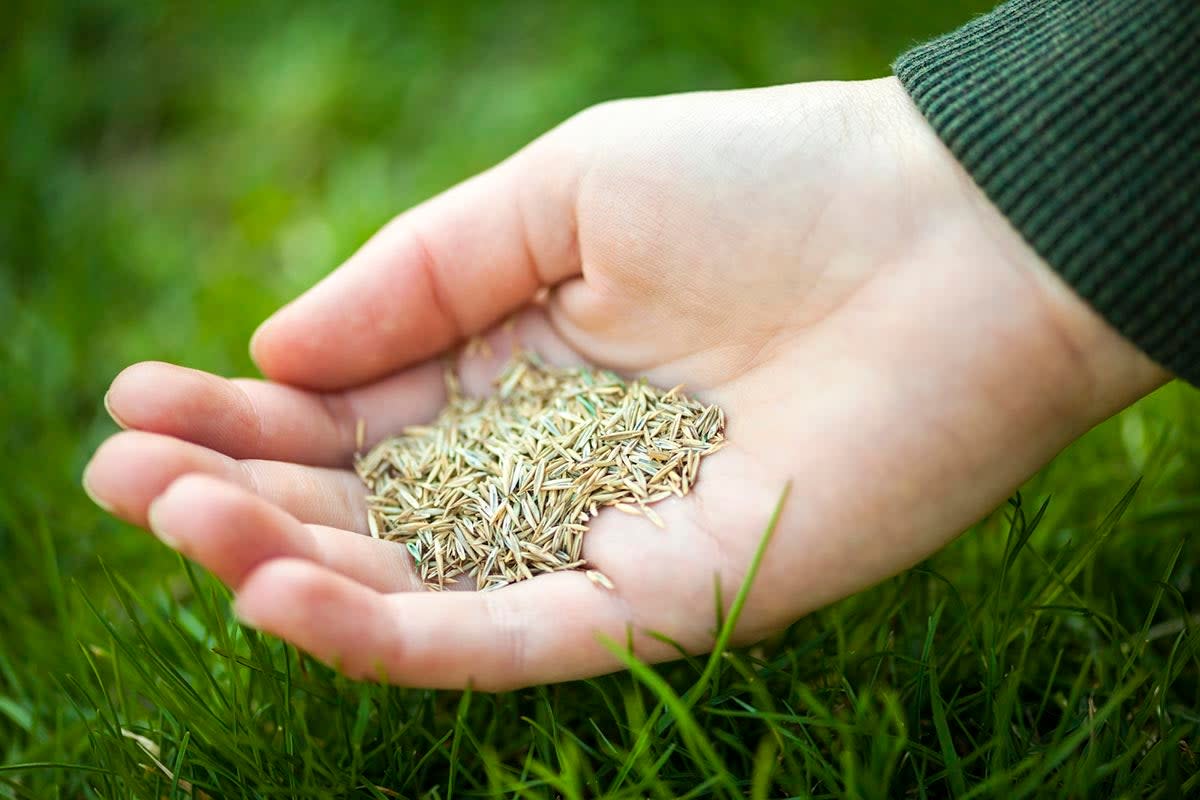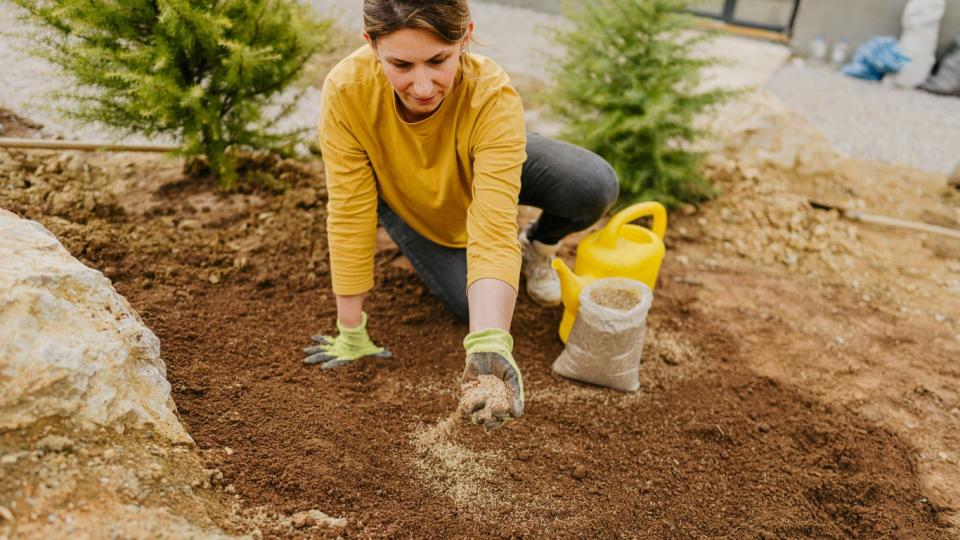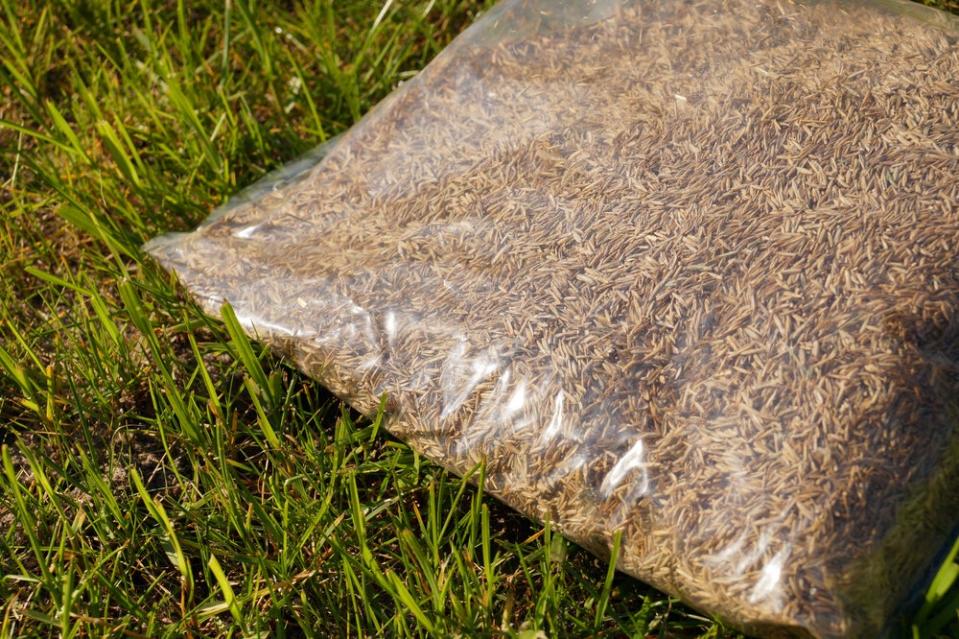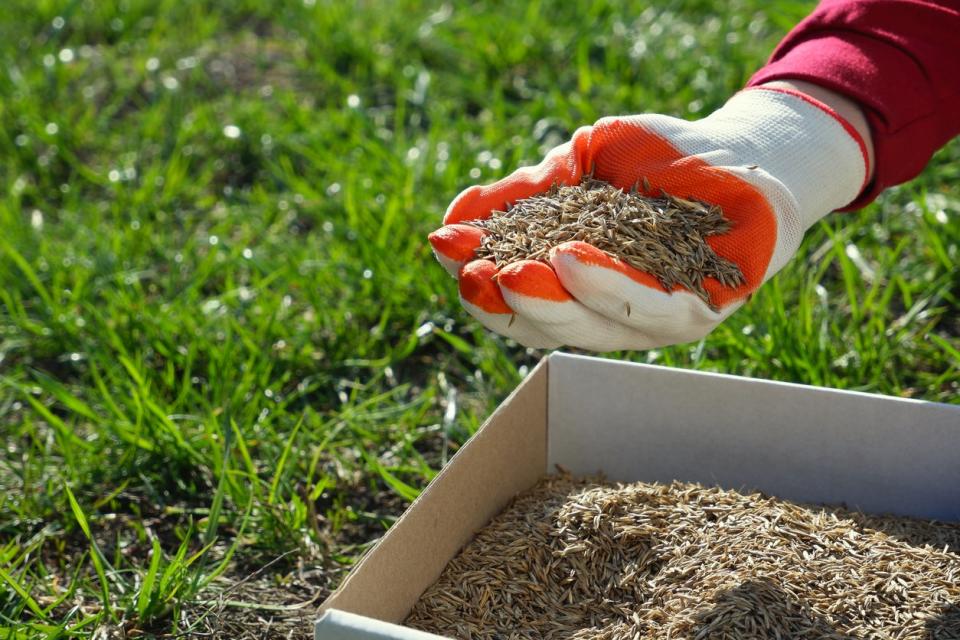Solved! Does Grass Seed Go Bad?

Q: I purchased two bags of grass seed last spring, and I am finally getting around to using them. However, one of the bags now has a musty odor. Does grass seed go bad?
A: Everyone wants a lush lawn with minimal effort and minimal expense, and planting grass seed can be a cost-effective solution. But nothing lasts forever, including grass seed. “The shelf life can vary depending on the grass species. But I have always advised homeowners to buy fresh seed each season,” says Gary Bachman, Ph.D., CPH, retired extension/research professor at Mississippi State University at Coastal Research and Extension Center. “And don’t purchase more than you need, thinking it can be stored and [hoping you can save] a few bucks.”
Even if we buy carefully, though, we’re often left with the odd half-bag of grass seed when spring rolls around again. While the answer to your question—“Can grass seed go bad?”—is “yes,” it doesn’t happen immediately, and it’s entirely possible that your leftover grass still has some life in it. But before you start scattering that seed on your lawn, you should first know how long grass seed lasts and how to tell if grass seed is still good.
How long does grass seed last?

Photo: istockphoto.com
Many factors affect how long a particular bag of grass seed will last, but there are expected lifespans. According to lawn leader Scotts, grass seed can be kept for 2 to 3 years if it’s stored properly. There is also evidence that some species of grass seed last longer than others. A U.S. government study in the late 1970s found that for Bermuda grass seed, 50 percent or more of the seeds could be expected to germinate after 1 to 2 years. For Kentucky bluegrass seed, that same germination rate could be obtained after 3 to 5 years, and for creeping bentgrass, after 5 or more years.
Seed quality is a major influence on grass seed germination and shelf life.
Before you even bring a bag of grass seed home, its germination rate—the percent of seeds that will actually sprout—has already been impacted by production location, harvesting conditions, and seed quality. So if the seeds were harvested in sub-optimal conditions, even if they were kept in the best possible storage environments, their germination rate will be significantly reduced.
Each package of store-bought grass seed should be marked with a “tested” date and a germination rate. The tested date, as the name implies, is the date on which the seed was tested for germination. This date indicates freshness and protects consumers from purchasing an old bag of seed. The germination rate is the percentage of seed that can be expected to germinate under ideal conditions. For quality seed, this figure should be 80 percent or higher. If you use seed within the first year post-packaging, it should germinate roughly at this rate. This rate will drop by about 10 percent each year, so you should expect your grass seed to lose viability over time.
When you’re shopping for grass seed, aside from making sure that you’re buying the right kind of seed for your region and your particular lawn, check the label for the following to confirm that you’re purchasing high-quality seed:
Purity: Be on the lookout for grass seed that has a high purity level, which means that it should contain no weed seeds, inert matter, or other contaminants.
Germination rate: Choose a seed with a high germination rate, which should be 80 percent or higher.
Seed coating: Grass seed is sometimes coated to help the seeds absorb moisture, and some brands add fertilizer, fungicides, or insecticides to the coating. Avoid coated seeds. They may not be good for pets and wildlife, they can kill off beneficial fungi, and you’ll get more actual seed per pound with uncoated seed.
Another way to make sure you’re getting a quality product that was packaged and stored according to industry standards is to buy from reputable distributors.
So, what about that bag of grass seed you inherited when your neighbors moved? Unless it’s unopened, in its original packaging, and less than a few years old, it’s probably best to use it just for overseeding or other low-stakes projects.
Storage conditions affect grass seed shelf life.
Ideal conditions for seed storage begin with a dry, cool, and dark space. Avoid moisture, humidity, direct sunlight, and rodents when storing grass seed. Excess moisture from rain and humidity increases the chances of fungal infection, mold growth, and premature sprouting. Rodents and other pests feast on the seed but leave the husk behind, which can be misleading to an untrained eye, as the seed container will still appear full.
While grass seed is reported to survive freezing temperatures in dry environments, it’s also best to avoid temperature extremes. In other words, outdoor storage is not ideal.
You can also maximize grass seed shelf life with the right container.

Photo: depositphotos.com
Seeds are magnets for moisture, so for long-term storage, make sure seeds are dry and place them in a sealed container. “Storing in the garage, most likely in open or poorly sealed bags, allows pests like insects, mice, and rats to get in and enjoy an easy meal,” Bachman says. To protect stored seed from pests and moisture, Bachman uses buckets with screw-top lids, which are also great for storing fertilizers.
If, however, you intend to plant the grass seed in the coming season, bulk storage bags may do the trick. Note that these bags have perforations that permit trace amounts of humidity to enter, reducing germination over time. Make sure the bags are kept in a cool, dry space to help limit the effect of moisture exposure. If you’re storing leftover seeds in a breathable sack, such as burlap, put the sack in an airtight container in a dry environment. Make sure to date and label leftover grass seed, and always check the seeds for signs of excess moisture and mold before use.
How can you tell if grass seed has expired?

Photo: istockphoto.com
The first step is to check the sell-by date. As discussed above, though, this expiration date doesn’t mean that the seeds are unusable. They may just have a lower germination rate, which means you may need to sow more seed to fill the lawn.
Aside from checking the sell-by date, how else can you tell if your grass seed is too old to use? Start by giving it a quick visual inspection. The presence of mold or fungus can indicate that the grass seed has been damaged by moisture. In the absence of such an obvious indication, though, determining if grass seed has gone bad is “hit or miss,” Bachman says. “It may become darker in color from high temperature or have a smell. It may be almost fermented-smelling. Or it may have no outward indications of having lost viability.” This is why Bachman advises homeowners to buy new seed.
If you’re absolutely determined to use up some old seed, you can perform a DIY germination test to find out if the seeds are viable. Place 10 seeds on a damp paper towel, put it inside a plastic bag, and seal it. Place the bag in a warm area for 10 days, and watch for germination. If fewer than five of the seeds sprout, the grass seed has a less than 50 percent viability rate, which means you would need to sow close to double the recommended amount to achieve adequate coverage. While this is certainly an option, you may get better results more efficiently if you just take Bachman’s recommendation and buy new seed.
